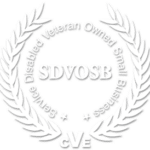In the realm of construction projects, ensuring quality, efficiency, and compliance with regulations is paramount. To achieve this, the United States Army Corps of Engineers (USACE) has implemented a robust inspection methodology known as the 3-phase inspection model. This model encompasses three critical phases, each tailored to specific aspects of construction, guaranteeing that projects meet required standards and mitigate potential issues. In this article, we will explore the key elements of the 3-phase inspection model and how it fosters first-time quality and successful project outcomes.
Phase 1 – Preparatory Phase: Setting the Foundation for Success
The Preparatory Phase is the crucial initial step in the 3-phase inspection model. Its primary objective is to lay the groundwork for seamless construction execution while mitigating costly problems that could arise during the project lifecycle. During this phase, a preconstruction meeting is conducted, bringing together stakeholders, including the owner, contractors, and subcontractors. Several key elements are discussed and addressed, including:
- Scheduling and Long Lead Items: Ensuring that the project timeline is clearly defined, and potential delays are minimized by identifying long-lead items early on.
- Government/Authority Approvals: Addressing any necessary permits, clearances, or approvals required before commencing construction to avoid regulatory issues.
- Key Personnel: Identifying and appointing key personnel responsible for specific aspects of the project, establishing clear lines of responsibility.
The desired outcomes of the Preparatory Phase are as follows:
A. Agreement on Construction Process and Requirements: Ensuring that all parties involved are on the same page regarding the construction process and project specifications.
B. Risk Assessment and Mitigation: Identifying potential project risks and formulating actionable plans to minimize or mitigate their impact.
C. Inspection Plan and Checklists: Creating a comprehensive inspection plan that includes required inspections and hold points, backed by checklists incorporating critical verifications.
D. Work Readiness: Verifying that all necessary elements are in place, giving the green light to begin construction safely and efficiently.
Phase 2 – Initial Phase: Ensuring a Strong Start
The Initial Phase takes place in coordination with the project’s Quality Control Plan for each Definable Feature of Work (DFOW). As work commences, this phase serves as a vital checkpoint to guarantee that the process aligns with established standards and expectations. Key activities during this phase include:
- Reviewing Preparatory Phase Meeting Notes: Ensuring that the decisions and plans established in the Preparatory Phase are carried forward.
- Verifying Preparedness: Ensuring that all necessary preparations have been taken, such as procurement of materials and equipment.
- Understanding Quality and Safety Risks: Ensuring that all involved parties are fully aware of the risks pertaining to both quality and safety, and measures to address them are implemented.
- Acceptability of Initial Work: Supervising the initial stages of work, closely monitoring the process, and allowing progression only when satisfied with the quality of work.
Phase 3 – Follow Up Phase: Maintaining Quality to the Finish Line
The Follow Up Phase serves as a continuous monitoring process, ensuring quality is upheld from project initiation to completion. Throughout this phase, comprehensive inspections are conducted, and any deficiencies are noted and promptly addressed. The key components of the Follow Up Phase include:
- Monitoring Work Progress: Using pictures, videos, daily reports, and detailed documentation to keep track of all aspects of contractor performance.
- Conducting Inspections: Regularly inspecting the ongoing work to ensure compliance with established standards.
- Reporting and Corrective Action: Noting any identified deficiencies and promptly reporting them to the relevant parties. Subsequently, verifying that the necessary corrective actions are taken to rectify the issues.
The 3-phase inspection model employed by the United States Army Corps of Engineers (USACE) is a comprehensive and structured approach to construction project management. By meticulously covering the Preparatory Phase, Initial Phase, and Follow Up Phase, the model ensures that each project adheres to established quality standards, prevents costly problems, and fosters collaboration between all stakeholders. As a result, the 3-phase inspection model plays a pivotal role in facilitating successful construction projects that meet their objectives efficiently and with a commitment to excellence.



